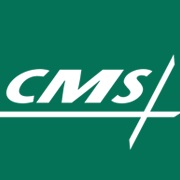CMS Published Final Rule for Surgical Bundled Payment Model
CMS published its final rule for the Comprehensive Care for Joint Replacement model. The first performance period under the bundled payment model will start on April 1, 2016.

- On January 15, 2016, the final rule for the Comprehensive Care for Joint Replacement model took effect, which is a new reimbursement program for orthopedic surgeries developed by the Centers for Medicare & Medicaid Services (CMS). High costs in healthcare continue to be an ongoing problem throughout the industry and a robust number of reforms have been implemented to control rising medical spending. The bundled payment model is one such reform that focuses on providing a total sum of reimbursement to providers for an entire episode of care including diagnosis, treatment, hospital stays, and rehabilitation.

Some of the most common surgical procedures completed for Medicare beneficiaries include hip and knee replacements, CMS reported last November. It cost CMS $7 billion in hospitalizations for the 400,000 joint replacement surgeries in 2014.
Additionally, there are some quality lapses that have occurred in the past when it comes to these types of operations including infections and implant failures. This has all led to an ongoing rise in healthcare costs for joint replacement surgeries. The bundled payment model, however, is expected to change all this.
There may not be enough financial incentive for providers to provide more effective, coordinated, high-quality care among these particular Medicare beneficiaries, CMS stated. The Comprehensive Care for Joint Replacement (CJR) model is meant to stimulate greater coordination and patient-centered care throughout the healthcare delivery system.
This particular bundled payment model will look to provide reimbursement for an episode of care that includes the moment of hospitalization, surgery, and 90 days after discharge. JDSupra reported that CMS published its final rule for the Comprehensive Care for Joint Replacement model. The first performance period under the bundled payment model will start on April 1, 2016.
This bundled payment model is meant to stimulate higher quality care and coordination between transitions of care especially after discharge and in post-acute medical settings. The Comprehensive Care for Joint Replacement program will be implemented in acute care hospitals throughout 67 metropolitan statistical areas around the nation.
There are some that have shown concern about the new bundled payment model including members of the House of Representatives. A letter sent to Acting CMS Administrator Andy Slavitt asked CMS to consider postponing the requirements for the new reimbursement program due to past payment systems being voluntary and this one mandatory.

“We are concerned that patients requiring higher-cost complex surgeries (such as hip fractures and ankle replacement procedures) or who suffer from multiple chronic conditions may find it more difficult to find hospitals willing to serve them, since the greater risk of complications or the higher level of post-acute care associated with their condition would be logically viewed by hospitals as increasing their risk under the proposed CCJR model,” House members stated in the letter.
Nonetheless, there are those that fully support the program especially the movement toward the bundled payment model. Over time, CMS predicts that these new reimbursement paradigms will make an impact on controlling the high levels of healthcare spending.
“I would say it’s probably the Center for Medicare and Medicaid Innovation that’s the most promising [at reducing healthcare spending]. Particularly, now we’ve seen what they’ve done with bundled payments and the chronic care joint program that they’ve rolled out mandatorily nationally,” Jeremy Earl, Associate at McDermott Will & Emory, told HealthPayerIntelligence.com.
“The Medicare penalties for hospital readmissions and other efforts from CMS [Centers for Medicare & Medicaid Services] to alter its payment methodologies, particularly through the work of the Center for Medicare and Medicaid Innovation, has made providers more accountable for the quality of care they provide,” Earl explained. “CMS’s authority to implement these payment reforms is from the Affordable Care Act, so it definitely has played a part in the shift to paying providers for value.”
“This shift, which is a significant development, is also driven by the commercial sector and the expansion into value-based reimbursement and movement away from fee-for-service. I see that all the time in my practice where insurers are looking to align themselves with providers based on cost-effectiveness and also providers who have demonstrated consistent quality.”
